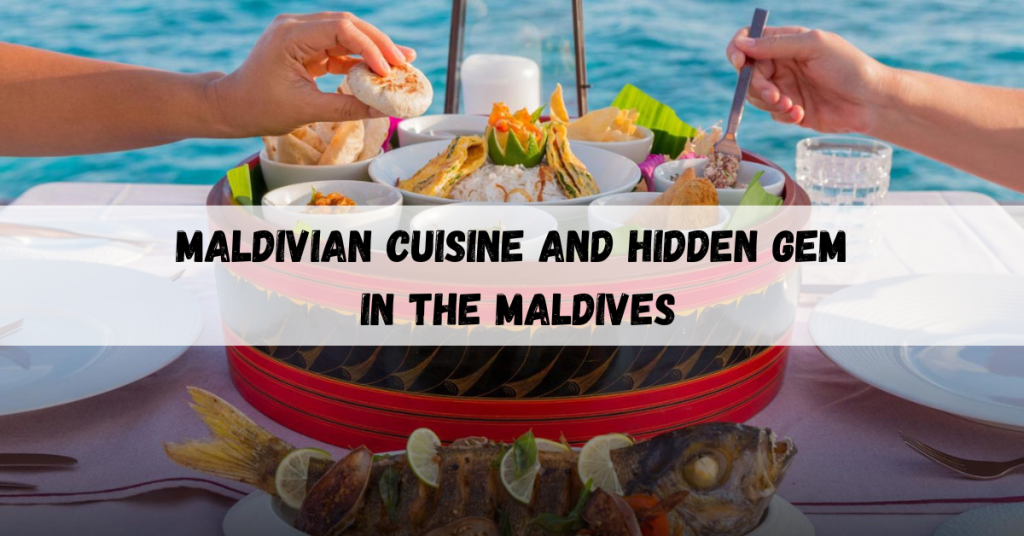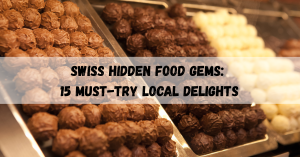The Maldives is more than just a luxury travel destination with pristine beaches and crystal-clear waters—it is a paradise for food lovers. Maldivian cuisine blends fresh seafood, tropical ingredients, and regional influences, creating a unique and flavorful experience. From secret cafés tucked away on secluded beaches to bustling seafood markets, let’s explore the best food and hidden gems in the Maldives.
Exploring Maldivian Cuisine: A Taste of the Islands
The Unique Flavors of Maldivian Dishes
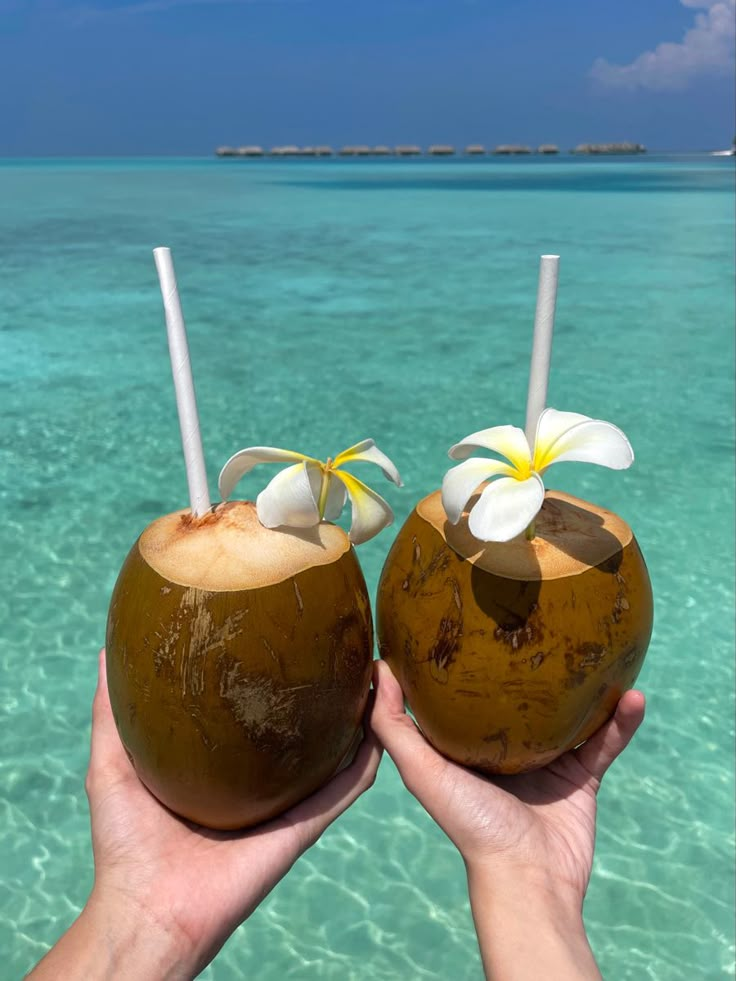
Maldivian cuisine is a delightful fusion of fresh seafood, coconut, and aromatic spices. Fishing is a way of life here, making tuna, reef fish, and shellfish the stars of most traditional dishes.
Traditional Ingredients and Cooking Techniques

- Seafood: Tuna, snapper, and lobster are staples of Maldivian cuisine.
- Coconut: Used in curries, drinks, and desserts.
- Spices: Cardamom, curry leaves, and chili peppers add depth to Maldivian dishes.
Cooking methods include grilling, steaming, and slow-simmering curries to enhance their bold flavors.
Best Local Dishes You Must Try in the Maldives
Mas Huni: The Iconic Breakfast Dish
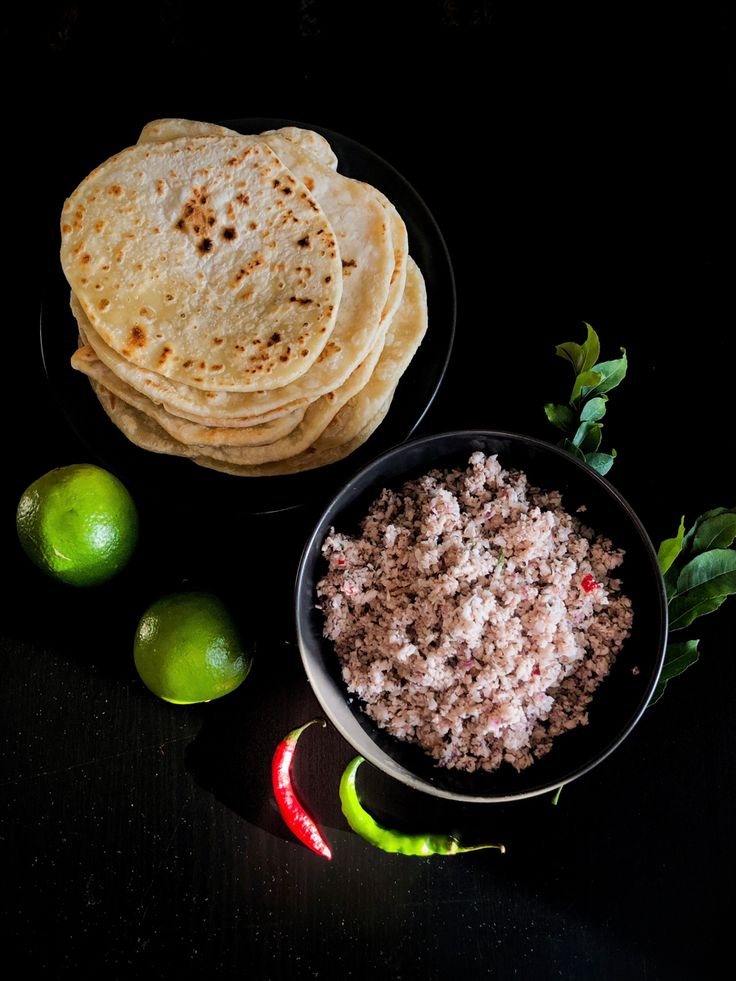
Mas Huni is a beloved Maldivian breakfast dish made with shredded tuna, grated coconut, onions, and chili, served with roshi (flatbread). It’s a must-try for an authentic island breakfast.
Fihunu Mas: The Maldivian Grilled Fish

Freshly caught and marinated with Maldivian spices, Fihunu Mas is grilled over an open flame, creating a smoky and flavorful dish that perfectly captures the essence of island cooking.
Garudhiya: The Heartwarming Fish Soup

Garudhiya is a fragrant fish broth served with rice, lime, and chili. This comforting soup is a staple in Maldivian homes, offering a taste of traditional island cooking.
Hedhikaa: The Maldivian Short Eats

Hedhikaa refers to Maldivian snacks like bajiya (fish-stuffed pastries), gulha (tuna dumplings), and keemia (fried fish rolls). These small bites are perfect for an afternoon tea break.
Hidden Culinary Gems in the Maldives
Local Markets: A Foodie’s Paradise
For an authentic Maldivian food experience, visit the Malé Fish Market, where fresh seafood, tropical fruits, and homemade delicacies are sold daily. These markets offer a glimpse into local culinary traditions.
Secret Beachfront Cafés and Restaurants
Hidden among the islands are small, family-run restaurants offering some of the freshest seafood in the Maldives. These lesser-known gems serve authentic dishes prepared with love and tradition.
Floating Restaurants: A Unique Dining Experience
For a one-of-a-kind meal, try a floating restaurant where you can dine on fresh seafood while surrounded by the tranquil waters of the Indian Ocean. These experiences blend fine dining with breathtaking natural beauty.
Where to Find the Best Seafood in the Maldives
Best Local Spots for Freshly Caught Fish

- Maafushi Island: Known for its budget-friendly seafood and beachfront dining.
- Hulhumalé: Home to fantastic local eateries serving freshly grilled fish and traditional dishes.
Resort Dining vs. Local Eateries: Which One to Choose?
While resorts offer gourmet dining with stunning views, local eateries provide a more authentic taste of Maldivian cuisine at a fraction of the price. For the best experience, try both!
Food Festivals and Cultural Celebrations in the Maldives
The Best Time to Experience Local Food Events
Maldivian food festivals celebrate the nation’s rich culinary heritage. The Maldivian Food Festival (held annually in November) is an excellent time to sample traditional dishes and enjoy cultural performances.
Traditional Food Customs and Their Significance
Food plays a vital role in Maldivian culture, bringing families and communities together for shared meals. Special dishes are often prepared for religious and national celebrations.
Maldivian Desserts: A Sweet Taste of the Islands
Maldivian cuisine isn’t just about savory seafood and spicy flavors, it also boasts a delightful range of sweet treats. Most Maldivian desserts are made using coconut, condensed milk, and tropical fruits.
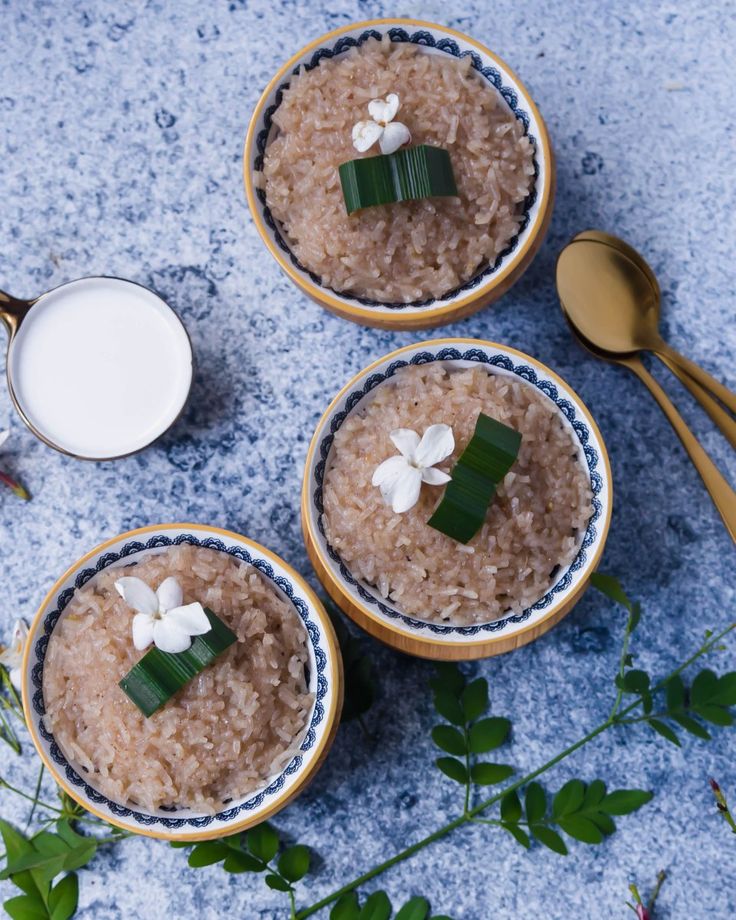
- Bondibaiy: A sweetened rice dish infused with coconut milk and cardamom, often served during celebrations.
- Huni Hakuru: Coconut-based sweet treats made with sugar and flour, resembling small cakes.
- Foni Boakiba: A traditional Maldivian rice cake, flavored with coconut and rosewater.
These desserts are typically enjoyed with a cup of Sai (Maldivian tea), making for a perfect end to any meal.
Street Food Culture in the Maldives
While resorts offer fine dining, the real flavors of Maldivian cuisine can be found in its vibrant street food scene. Local markets and roadside vendors serve up quick, flavorful bites that reflect the heart of Maldivian daily life.
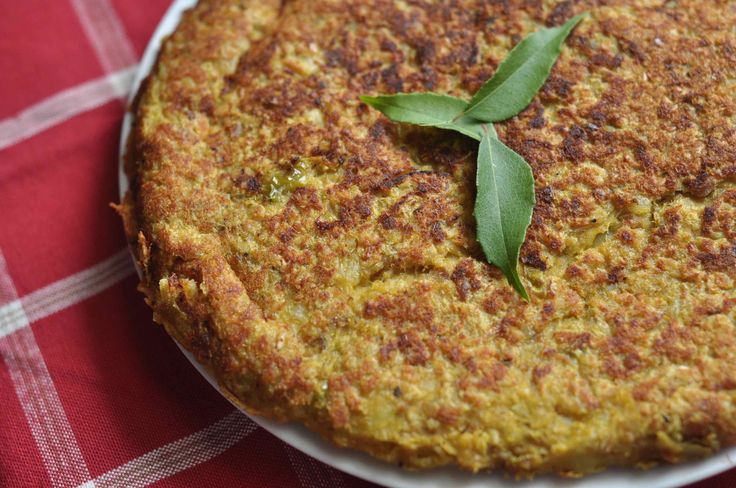
- Mashuni Wraps: A modern take on the traditional Mas Huni, wrapped in flatbread for an on-the-go meal.
- Bajiya: A crispy pastry filled with spiced tuna and coconut, similar to a samosa.
- Kulhi Boakibaa: A spicy fish cake made from tuna, coconut, and curry spices, baked to perfection.
Exploring Maldivian street food is a must for those looking to experience authentic local flavors beyond the resorts.
Sustainable Dining in the Maldives
With its fragile marine ecosystem, the Maldives is at the forefront of sustainable dining practices. Many restaurants and resorts are embracing eco-friendly initiatives to preserve the environment while offering top-quality food.
- Farm-to-Table Concepts: Some resorts grow their own organic produce to reduce food imports.
- Sustainable Fishing Practices: Many local eateries prioritize responsibly sourced seafood to protect marine life.
- Plastic-Free Dining: Several restaurants have eliminated plastic straws and packaging to support eco-conscious tourism.
Sustainable dining in the Maldives ensures that visitors can enjoy the country’s rich culinary traditions while contributing to environmental conservation.
The Maldives is not just a dream destination for beach lovers, it is a food lover’s paradise. Whether you’re savoring grilled fish on a hidden island café, exploring the vibrant seafood markets, or dining on a floating restaurant, Maldivian cuisine promises a culinary journey as unforgettable as its turquoise waters.
Frequently Asked Questions (FAQs)
How spicy is Maldivian food?
Maldivian food is generally spicy, but milder versions can be requested.
Are there vegetarian options in Maldivian cuisine?
Yes! Many dishes use coconut, lentils, and fresh vegetables, making them suitable for vegetarians.
What is the best time to visit the Maldives for food lovers?
The Maldivian Food Festival, usually held in November, is the perfect time to explore local cuisine.
Can I find international cuisine in the Maldives?
Yes, resorts and local restaurants offer a variety of international dishes, from Italian to Japanese.
Is it expensive to eat in local restaurants?
Not at all! Local eateries offer delicious, budget-friendly meals compared to resort dining.
